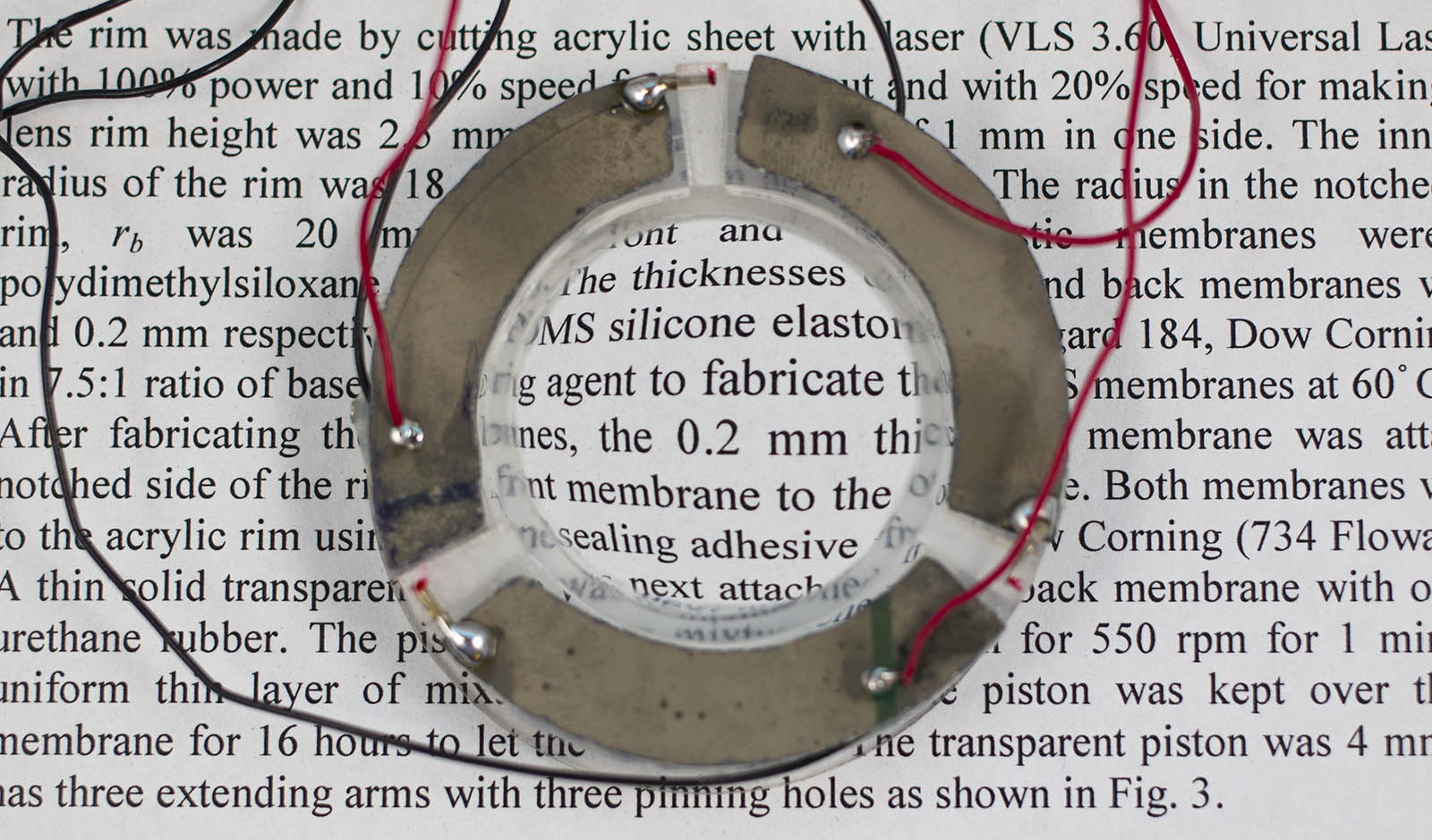Electronic glasses auto-focus on what you’re looking at
They’re not very pretty, but prototype eyeglasses from University of Utah scientists could make progressive lenses obsolete for older people. Using electronically activated lenses and infrared distance meters, they can focus automatically on whatever you’re looking at, whether it’s far or close up. Once perfected, the device could eliminate the need for multiple pairs of reading or driving glasses for folks with presbyopia or farsightedness.
Age-related far- or nearsightedness happens when the lenses in your eyes can no longer change focus between objects. As a result, many people between their 40s and 50s have to wear progressive-lens eyeglasses divided into small focal zones depending on object distance. One company called Deep Optics has pursued an auto-focusing solution using see-through liquid-crystal lenses, but is still working on a practical prototype. Google is also working on an auto-focus contact lens with startup Novartis, but recently said that it wouldn’t be testing them anytime soon.

To make the lenses adjustable, the University of Utah team placed glycerine — a thick, clear liquid — within membranes on the front and back. The chunky frame, meanwhile, holds electronics, a battery and an infrared distance meter. When you look at something, the meter gauges the distance and sends a signal to a mechanical actuator on the rear membrane. Within 14 milliseconds, it switches focus from one object to another, giving you clear vision without the need to look up or down.
Users can upload their prescriptions to the glasses by pairing them with a smartphone over Bluetooth. That means that, in theory, you could keep the same pair of glasses forever, even if your eyesight changes. You’d need to recharge them like a smartphone, but that could be less of a hassle than packing multiple pairs around. “Most people who get reading glasses have to put them on and take them off all the time,” says research lead Carlos Mastrangelo. “You put these on, and it’s always clear.”
The current prototype, which first debuted at CES 2017, is obviously something nobody would want to wear in public. The goal now, then, is to make the whole package smaller and lighter via some serious miniaturization. The team has created a startup company to commercialize the smart glasses and, hopefully, get them on the market in as little as three years.
(26)





